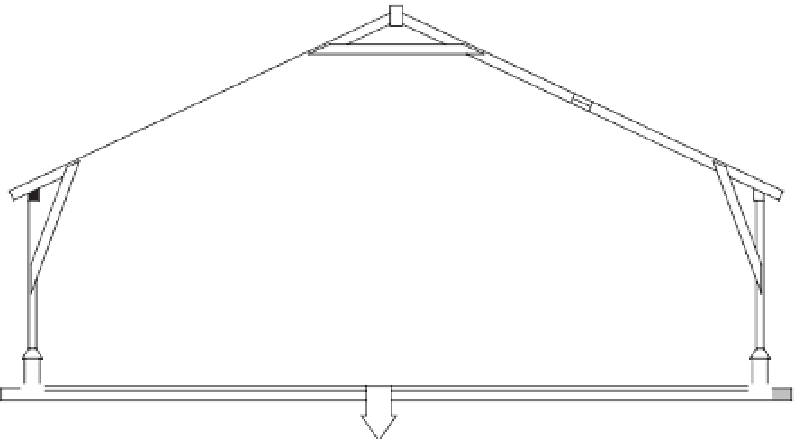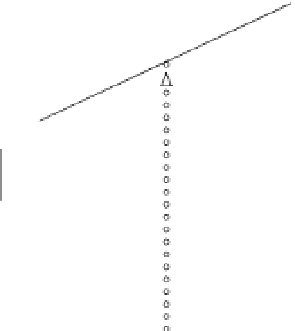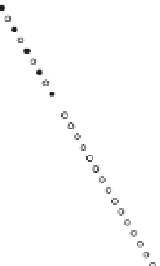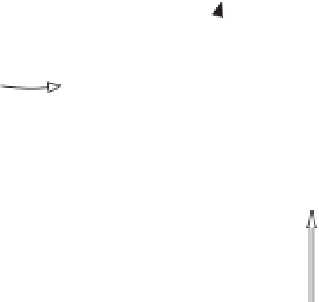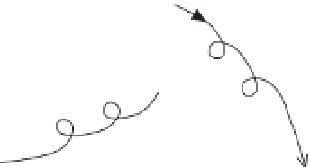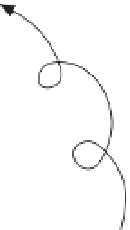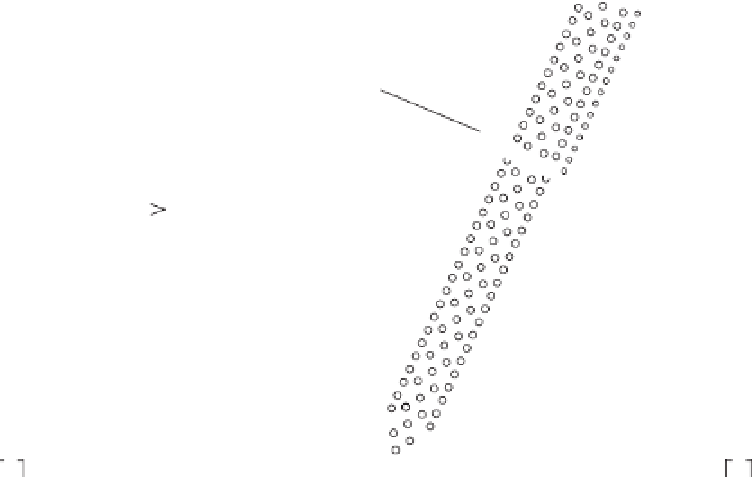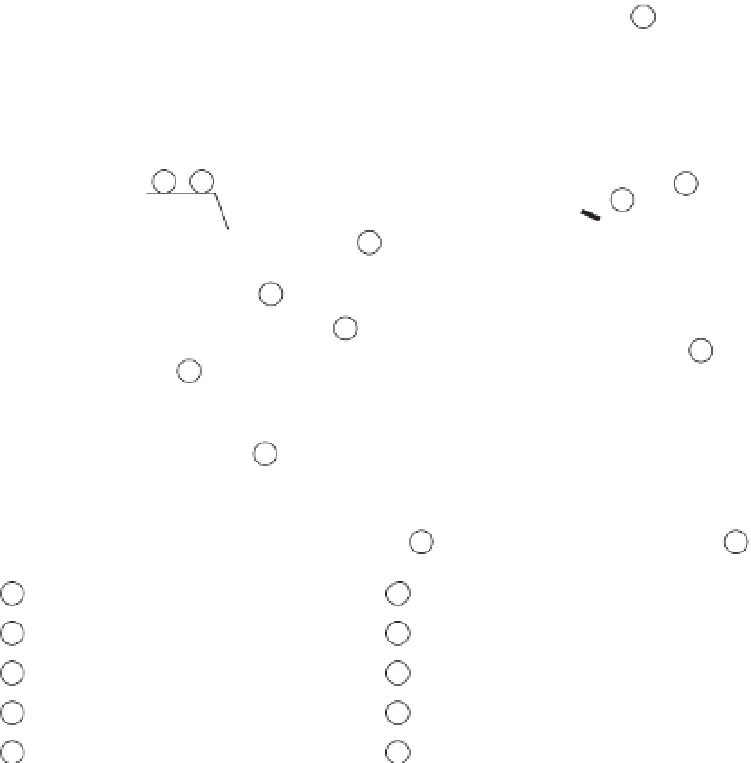Agriculture Reference
In-Depth Information
1
29
+
2
3
7
2
2
6
8
10
4
5
1
Solar radiation
6
Heat flux to the air
2
Reflection
7
Ventilation and heat exchange
3
Absorption
8
Soil radiation
Heat flux to the soil
Cover radiation
4
9
5
Horizontal heat flux
10
Evapotranspiration
Fig. 3.2.
Radiation and energy balance in a greenhouse (adapted from Seeman, 1974).
At latitudes higher than 30°, from the
equator, the natural decrease of solar radia-
tion is the most important uncontrolled lim-
iting factor for crop growth inside
greenhouses, and thus it becomes impera-
tive under such conditions to strive for the
maximum possible intensity, duration and
uniformity of radiation (Giacomelli and
Ting, 1999).
The above-mentioned transmissivity
is a function, among other factors, of:
(i) the climate conditions (cloudiness,
mainly, which determines the proportions
of direct and diffuse radiation); (ii) the
position of the Sun in the sky (which will
depend on the date and time of day and
the latitude); (iii) the geometry of the
greenhouse cover; (iv) its orientation
(east-west, north-south); (v) the covering
material (radiometric characteristics,
cleanliness, water condensation on its
inner surface); and (vi) the structural ele-
ments and equipment inside the green-
house which limit, due to shadowing, the
available radiation inside (Bot, 1983;
Zabeltitz, 1999; Soriano
et al
., 2004b). The
transmissivity to direct solar radiation
will vary depending on the angle of inci-
dence (formed by the solar ray and the
perpendicular to the greenhouse cover;
Fig. 3.3), such transmissivity being higher,
the smaller the angle is (i.e. when the
radiation impinges on the greenhouse
cover with high perpendicularity; Plate 5).
The transmissivity to diffuse radiation,
coming from every possible direction of
the sky is scarcely influenced by the geo-
metry of the greenhouse cover.





